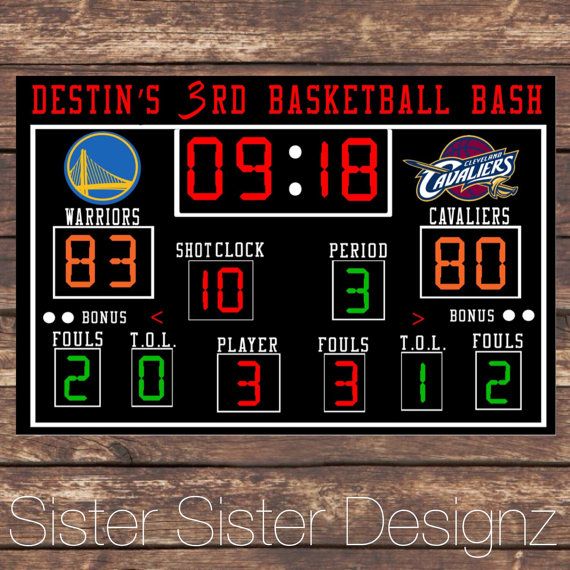Home »
Misc »
How long is a shot clock in basketball
How long is a shot clock in basketball
RULE NO. 7: Shot Clock
Search for:
Section I—Definition
The ‘shot clock’ shall refer to the timing device that displays a countdown of the time within which the team possessing the ball must attempt a field goal. The shot clock shall start at 24 seconds unless otherwise provided in Rule 7. The shot clock shall be displayed in seconds, except tenths of seconds will also be displayed once the shot clock reaches 4.9 seconds.
Section II—Starting and Stopping of Shot Clock
- The shot clock will start when a team gains new possession of a ball which is in play.
- On a throw-in, the shot clock shall start when the ball is legally touched on the court by a player.
- Following a jump ball or missed free throw, the shot clock shall start when new possession is obtained.
- After gaining possession of the ball, a team must attempt a field goal before the shot clock expires. To constitute a legal field goal attempt, the following conditions must be complied with:
- The ball must leave the player’s hand prior to the expiration of the shot clock.
![]()
- After leaving the player’s hand(s), the ball must make contact with the basket ring.
- A team is considered in possession of the ball when holding, passing or dribbling. The team is considered in possession of the ball even though the ball has been batted away but the opponent has not gained possession.
- Team possession ends when:
- The ball hits the rim of the offensive team
- The opponent gains possession
- If a ball is touched by a defensive player who does not gain possession of the ball, the shot clock shall continue to run.
- If a defensive player is the last to touch the ball before going out-of-bounds or entering the basket ring from below, the shot clock is stopped and the offensive team shall be awarded the ball. The offensive team shall have only the unexpired time remaining on the shot clock in which to attempt a field goal. If the shot clock reads 0, a shot clock violation has occurred, even though the horn may not have sounded.
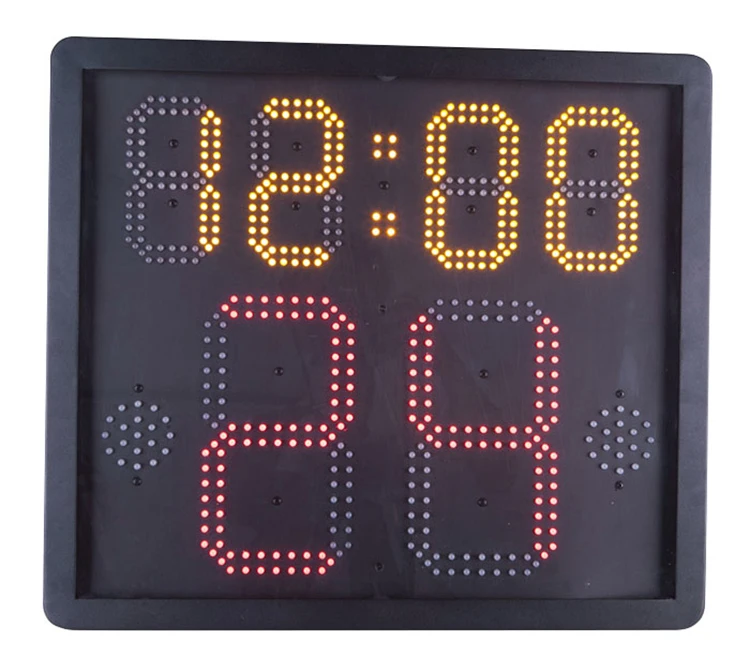
- If during any period there are 24 seconds OR LESS left to play in the period, the shot clock shall not function following a change of possession; provided, however, the shot clock shall be reactivated and reset to 14 seconds when any of the situations described in Section IV—d below occur.
- If an official inadvertently blows his/her whistle and the shot clock buzzer sounds while the ball is in the air, play shall be suspended and play resumed by a jump ball between any two opponents at the center circle, if the shot hits the rim and is If the shot does not hit the rim, a shot clock violation has occurred. If the shot is successful, the goal shall count and the ball inbounded as after any successful field goal. It should be noted that even though the official blows his/her whistle, all provisions of the above rule apply.
- If there is a question whether or not an attempt to score has been before the shot clock expires, the final decision shall be made by the of See Rule 13—Section I—a—8.

- Whenever the shot clock reads 0 and the ball is dead for any reason other than a defensive three-second violation, kicking violation, punched ball violation, personal foul or a technical foul by the defensive team, a shot clock violation has occurred.
Section III—Putting Ball In Play After Violation
If a team fails to attempt a field goal within the time allotted, a shot clock violation shall be called. The ball is awarded to the defensive team on the sideline, nearest the spot where play was suspended but no nearer to the baseline than the free throw line extended.
Section IV—Resetting Shot Clock
- The shot clock shall be reset when a special situation occurs which warrants such action.
- The shot clock is never reset on the following:
- Defensive player is the last to touch the ball before going out-of-bounds or entering the basket ring from below
- Technical fouls or delay-of-game warning on the offensive team
- Jump ball is retossed as a result of a poor toss, double violation or correctable error
- Suspension-of-play (except for infection control)
- Field goal attempt which fails to touch the rim
- Jump balls which are the result of a held ball caused by the defense
- The shot clock shall be reset to 24 seconds anytime the following occurs:
- Change of possession from one team to another
- Personal foul where ball is being inbounded in backcourt
- Violation where ball is being inbounded in backcourt
- Jump balls which are not the result of a held ball caused by the defense
- All flagrant and punching fouls
- The shot clock shall be reset to 14 seconds anytime the following occurs:
- The offensive team is the first to gain possession after an unsuccessful free throw that remains in play, or an unsuccessful field goal attempt that contacts the basket ring
- A loose ball foul is called on the defensive team in the sequence immediately following an unsuccessful free throw that remains in play, or an unsuccessful field goal attempt that contacts the basket ring; provided that, as a result of the foul, the offensive team inbounds the ball in the frontcourt (NOTE: If, as a result of a defensive foul, the offensive team inbounds the ball in the backcourt, Rule 7—Section IV—c—2 applies)
- The offensive team retains possession after the ball goes out of bounds in the sequence immediately following an unsuccessful free throw that remains in play, or an unsuccessful field goal attempt that contacts the basket ring
- NOTE: For purposes of Rule 7—Section IV—d only, an “unsuccessful field goal attempt that contacts the basket ring” shall include any live ball from the playing court that contacts the basket ring of the team which is in possession.
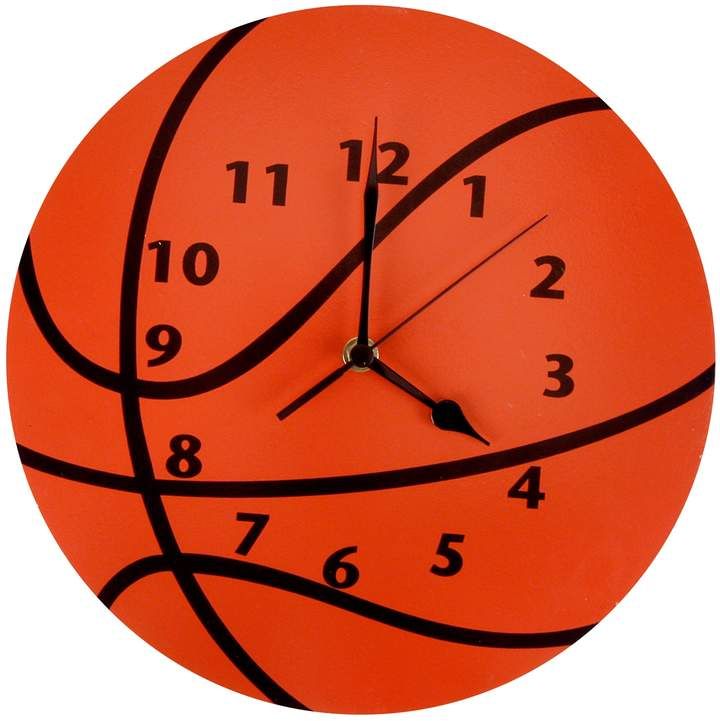
- The shot clock shall remain the same as when play was interrupted or reset to 14 seconds, whichever is greater, anytime the following occurs:
- Personal foul by the defense where ball is being inbounded in frontcourt EXCEPTION: Rule 7—Section IV—d—2
- Defensive three-second violation
- Technical fouls and/or delay-of-game warnings on the defensive team
- Kicked or punched ball by the defensive team with the ball being inbounded in the offensive team’s frontcourt
- Infection control
- Jump balls retained by the offensive team as the result of any violation by the defensive team during a jump ball which results in a frontcourt throw-in
Basketball Shot Clock
Home>Sports>Basketball>Basketball Rules
PreviousNext
Table of Contents
- Shot Clock
- NBA Shot Clock
- College Basketball Shot Clock
- Starting the Shot Clock
- Shot Clock Stoppages
- Shot Clock Resets
- Shot Clock Violation
- Shot Clock History
- Use of Basketball Shot Clocks
- Basketball Shot Clock Operator
- Buy A Basketball Shot Clock
- FAQ
Shot Clock
Basketball shot clocks are a necessary piece of equipment for a competitive basketball game.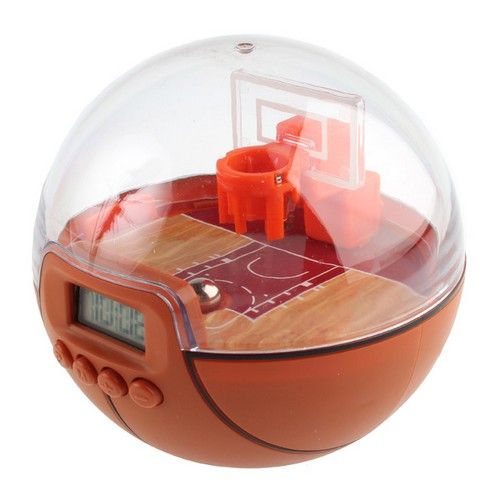 The purpose of a shot clock is to set a timer for how long a team can have the ball in one possession before shooting the ball. If this timer runs out, the team with the ball is assessed a shot clock violation and loses possession of the ball. The shot clock is located on top of the backboard for any competitive basketball game. In the NBA, the shot clock is set to 24 seconds, while in the NCAA, it is 30 seconds.
The purpose of a shot clock is to set a timer for how long a team can have the ball in one possession before shooting the ball. If this timer runs out, the team with the ball is assessed a shot clock violation and loses possession of the ball. The shot clock is located on top of the backboard for any competitive basketball game. In the NBA, the shot clock is set to 24 seconds, while in the NCAA, it is 30 seconds.
The shot clock in basketball keeps track of how long the team on offense can possess the ball before they have to shoot it. The shot clock was invented so that teams would play the game at a quicker pace.
NBA Shot Clock
In the NBA, the shot clock lasts 24 seconds.
College Basketball Shot Clock
In college basketball, the shot clock lasts 30 seconds.
Starting the Shot Clock
The shot clock begins counting down as soon as a possession begins. This occurs immediately when the ball is touched after an inbounds pass, possession changes during the run of play, or jump ball.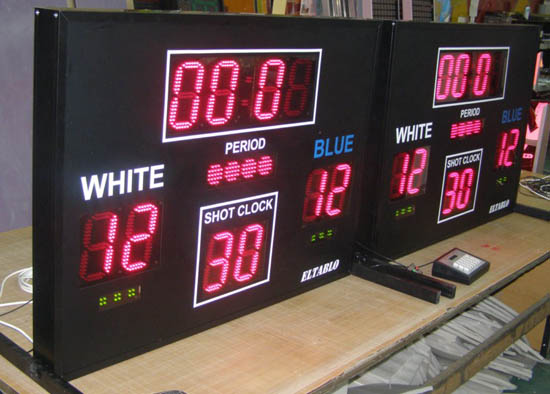
Shot Clock Stoppages
The shot clock stops ticking when the ball is declared dead by referees for any reason. At these times, the game clock also stops. The shot clock resumes once the ball is put back into play with a jump ball or a throw-in.
Shot Clock Resets
Some scenarios require the shot clock to reset. In college, all shot clock resets are set to 20 seconds. In the NBA, the shot clock may reset either fully (to 24 seconds) or partially (to 14 seconds).
In the NBA, the shot clock fully resets to 24 seconds when:
- There is a change of possession
- Personal foul or violation that requires an inbound in the backcourt
- Jump balls resulting from a held ball by the defense
The NBA shot clock resets to 14 seconds after the following:
- An offensive rebound after a missed shot or free throw hits the rim
- The defense commits a loose ball foul after a missed shot or free throw hits the rim
- The ball goes out of bounds off the defense after a missed shot or free throw hits the rim
Shot Clock Violation
When the shot clock reaches zero, the buzzer and red lights go off to signal a shot clock violation.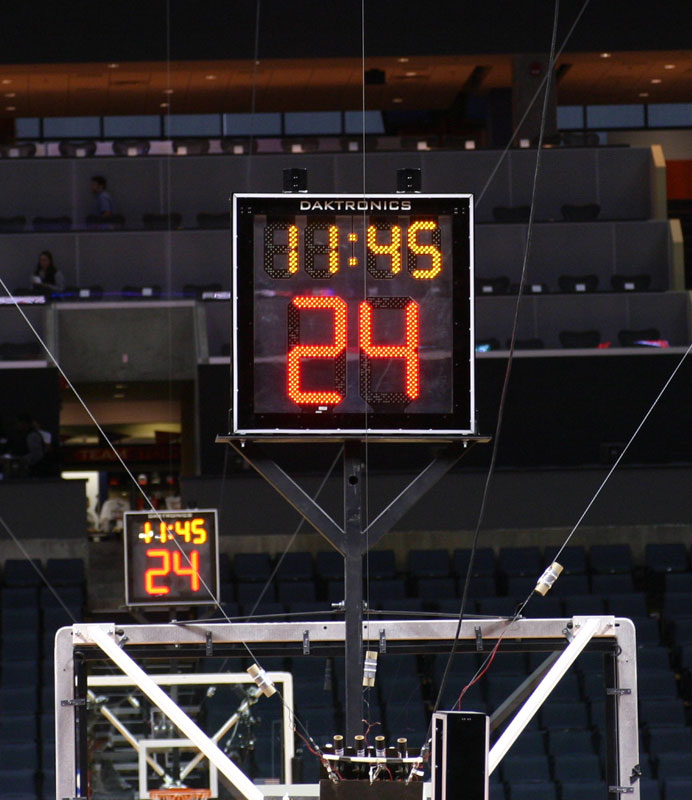 A shot clock violation results in a turnover. The opposing team will get to inbound the ball and start a new possession. A shot clock violation will be called on a team if they haven’t shot the ball and still have possession when the shot clock reaches zero. As long as the ball has left a player's hands and is in the air by the time the shot clock hits zero, it is not considered a shot clock violation, although the ball still needs to hit the rim.
A shot clock violation results in a turnover. The opposing team will get to inbound the ball and start a new possession. A shot clock violation will be called on a team if they haven’t shot the ball and still have possession when the shot clock reaches zero. As long as the ball has left a player's hands and is in the air by the time the shot clock hits zero, it is not considered a shot clock violation, although the ball still needs to hit the rim.
Shot Clock History
The shot clock rule was added to basketball in 1954. Before the days of the shot clock, teams could hold onto the ball forever with no time limit, resulting in many boring, low-scoring games. Danny Biasone came up with the 24-second shot clock by dividing the number of seconds in a game (48 minutes makes 2,880 seconds) by 120 shots (Biasone found that entertaining games had about 120 shots per game). Thus, the 24-second shot clock was born.
The college shot clock was not developed until 1985 when a 45-second clock was implemented. This was shortened to 35 seconds in 1993 and then to 30 seconds in 2015.
This was shortened to 35 seconds in 1993 and then to 30 seconds in 2015.
There is no standardized American high school shot clock, although 10 states have already implemented either 35 or 30-second shot clocks statewide.
Use of Basketball Shot Clocks
The shot clock counts down how many seconds the team is allowed possession: in the NBA this is 24 seconds, while in the NCAA, it is 30 seconds. When it hits zero, it will buzz, indicating that the possession is over, and the other team gets the ball if a shot did not go up during the possession. Shot clocks can also show the game time to help players see how much time is left in the game without having to locate a scoreboard around the arena.
For example, a shot clock may say you have 15 seconds left in the possession, but on top of that, in a smaller font, it will show the game time, like 8:33. Players must make quick and timely decisions in order to accomplish what they must offensively without the shot clock running out.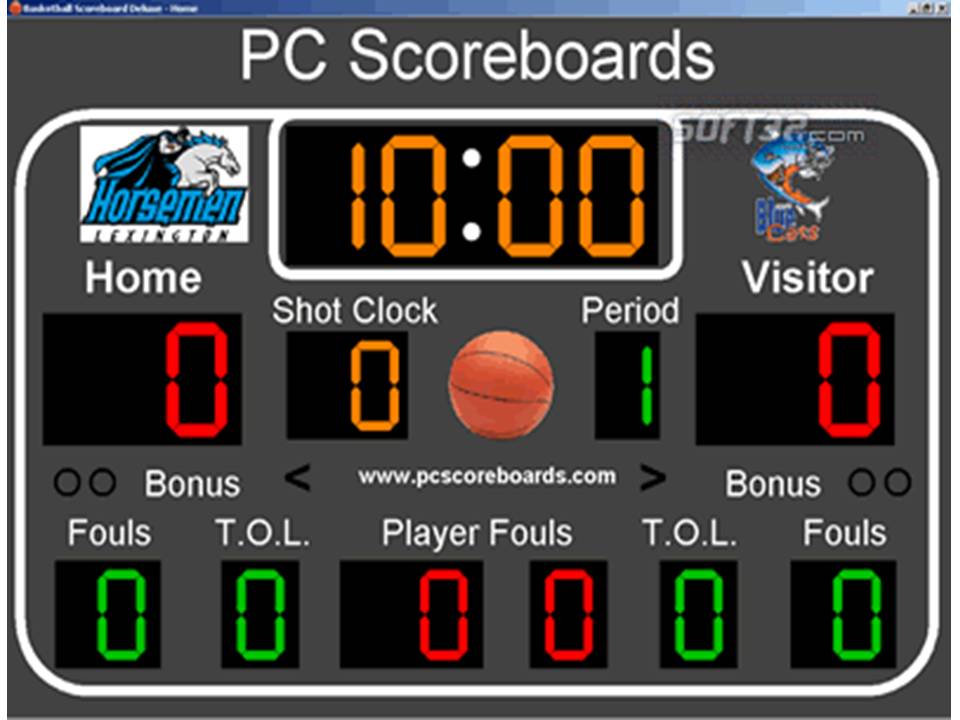 Teams can rush things or go too slow, leading to lost possessions due to the shot clock.
Teams can rush things or go too slow, leading to lost possessions due to the shot clock.
Basketball Shot Clock Operator
With every shot clock, there needs to be a shot clock operator who is in charge of resetting the shot clock every time a new possession begins during a game. Shot clocks are not able to know when a new possession begins, so the shot clock is programmed to reset with the touch of a button, which the operator is in charge of hitting. The operator must be paying full attention in order to not mess up the shot clock, therefore messing up the possible outcome.
Buy A Basketball Shot Clock
Shot clocks are advanced pieces of equipment, which is why they are typically very expensive. Purchasing a shot clock will typically cost you more than $1,000. This is not a problem in the NBA, as they are a multi-million dollar operation; however, at some colleges and high schools, this can be a lot of money.
FAQ
What is the shot clock in basketball?
The shot clock in basketball is a timing device that starts counting down as soon as a team gains possession of the ball; if the team fails to shoot before the shot clock reaches zero seconds, then they will commit a shot clock violation.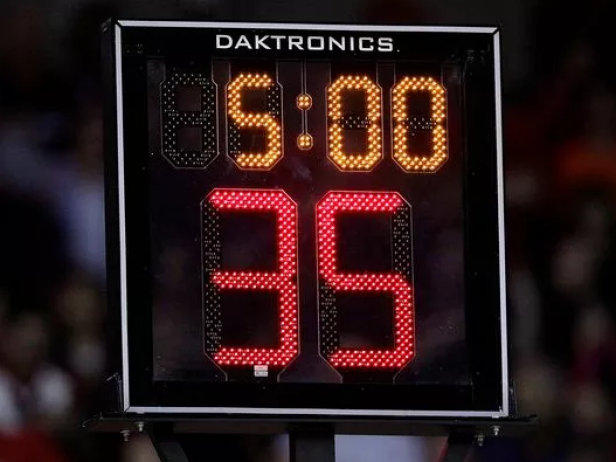 Shot clocks are used to increase the pace of play and prevent teams from wasting time by holding the ball for long periods. The shot clock is displayed at each end of the court, over each basket, and throughout the arena so that players, officials, and fans all have a clear view of the shot clock throughout the game.
Shot clocks are used to increase the pace of play and prevent teams from wasting time by holding the ball for long periods. The shot clock is displayed at each end of the court, over each basket, and throughout the arena so that players, officials, and fans all have a clear view of the shot clock throughout the game.
How long is the shot clock in the NBA and NCAA?
The shot clock is 24 seconds long in the NBA and 30 seconds long in NCAA basketball games. Like the NBA, the WNBA and FIBA use 24-second shot clocks in their games. Women’s NCAA basketball utilizes the same 30-second shot clock used in men’s play. In the case of an offensive rebound after the shot clock has wound down, the shot clock is reset to 14 seconds.
What is a shot clock violation?
In basketball, a shot clock violation is a type of infraction which occurs whenever a team is unable to make a successful shot at the basket prior to the shot clock elapsing. A shot clock violation will be called if the shot clock runs out and the possessing team has not done one of three things: made a shot that struck the rim, made a successful score, or lost possession of the ball.
PreviousNext
Pages Related to Basketball Shot Clock
- Basketball Throw Ins
- Basketball Rules List
- Basketball Substitutions
- Basketball Rules and Regulations
- Basketball Skunk Rule
- Basketball Roster Size
PreviousNext
Rule "24 seconds" in basketball: the essence and features of the rule
An important role in the competition is played by the 24 second rule, which athletes must comply with. A player or team must complete the throw within 24 seconds on 2 occasions:
- If a basketball player has gained control of the ball.
- If the ball has touched a player or an athlete has touched the ball while the team is still in control of the ball.
Rule 9 conditions0011
For a 24 second roll to be considered completed, 2 conditions must be met simultaneously:
- The ball is out of the player's hands before the shot clock signal.
- Immediately after the ball is out of hand, it hits the basket or touches the basket.
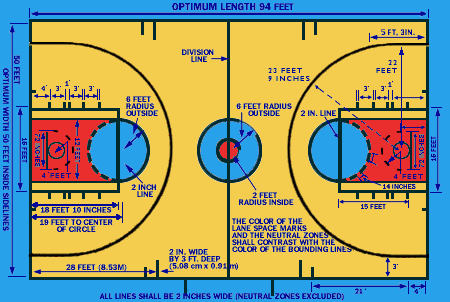
There are cases when the ball can be thrown just before the end of the 24 second period. Then the sound of the timer is heard at the moment when the ball flies into the ring and is in the air. In these cases, it all depends on the circumstances:
- If the ball went into the basket, then its hit is counted without violations.
- If the ball touches the ring but does not enter the basket, the match continues and the gong is ignored.
- If the ball does not touch the ring and goes past, a violation is counted. But if at the same moment the opposing team takes control of the ball, then the match continues.
All obstacles that could interfere with the ball are taken into account.
Sometimes, in addition to the sound signal, a shot timer light signal is also given. To do this, the board around the entire perimeter must be equipped with a yellow light signal.
What happens when a match is stopped?
If the referee stops the match, the shot clock is cancelled. This happens in several cases:
This happens in several cases:
- the team that was not in control of the ball committed a foul or violation but did not release the ball into touch;
- The team not in control of the ball has any good reason;
- circumstances beyond the control of any of the athletes.
The ball is passed to the team that previously had control of the ball. The ball can then be dropped in either the backcourt or frontcourt. If this happens in the backcourt, then by 24 seconds the timer will be cancelled.
On a frontcourt throw-in, different options may arise:
- If the timer indicates that there are 13 seconds or less left before the end of the period, then the timer is reset to 14 seconds.
- If 14 seconds or more remain until the end, the timer is not reset. The countdown continues from the moment of pause.
The number of seconds remains the same from the moment the game is stopped until the end of this pause.![]()
The timer is not reset if it would put one of the teams in unequal conditions.
Get new forecasts: Vkontakte and Telegram .
The team in control of the ball commits a violation or foul (including an out). The referee stops play and allows the opposing team to throw the ball in. In this case, the timer must be reset.
The other offensive team may be awarded a throw-in under the alternating possession rules. Then the timer is also cancelled.
Throw-in eligible:
- in frontcourt - timer reset to 14 seconds;
- in the backcourt - reset to 24 seconds.
Restart procedure
The game resumes at the location closest to where it left off. From the moment the match is resumed, the timer continues to count down.
The method of restarting the game is determined by the head coach. The ball must return to play where it left off. This can take place in the backcourt or frontcourt. The return is made when the game clock shows 2:00 minutes or less after the timeout.
The return is made when the game clock shows 2:00 minutes or less after the timeout.
How a throw-in is administered after a time-out:
- in frontcourt - countdown continues;
- in the backcourt - if the timer has less than 13 seconds left, it will be canceled up to 14 seconds; if more than 14 seconds remain, the countdown continues.
Throw-in after violation or foul (not out):
- in advanced - reset to 14 seconds;
- in the rear - reset to 24 seconds.
Throw-in after a time-out taken by the team that gained control of the ball:
- advanced - reset to 14 sec.;
- rear - reset to 24 sec.
As punishment for unsportsmanlike conduct or a disqualifying foul, a team must recover the ball from the frontcourt throw-in line. The timer resets to 14 seconds.
When the ball touches the opposing team's basket ring, the timer can be reset in different ways:
- By 14 seconds - if the ball is still controlled by the team that took the throw.
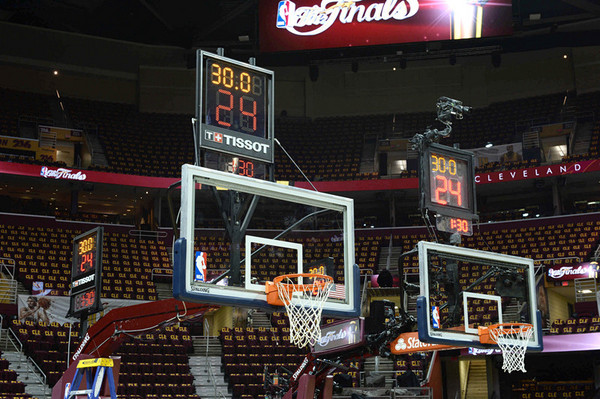
- By 24 seconds - if the opposing team has gained control of the ball.
The gong must be ignored if it sounds when no one is in control of the ball or when it is in possession of one of the teams.
All about basketball
How to strengthen fingers? 4 exercises The strength of the fingers is the most important component of the game of basketball. If your fingers are strong and...
Mini basketball for children and its main features According to the legend, American Jay Archer looked at a basketball match through inverted binoculars and...
Jogging in basketball: differences from turning, playing in a prone and sitting position Jogging is a type of violation in which a basketball player commits... streetball (3x3 basketball) shots: unsportsmanlike, disqualifying and technical fouls
After a team commits 6 fouls, it...
Basketball vocabulary
Triple-double What is a “triple-double” in basketball? What can you get a triple-double for? Triple-double is a set of two-digit value by a player.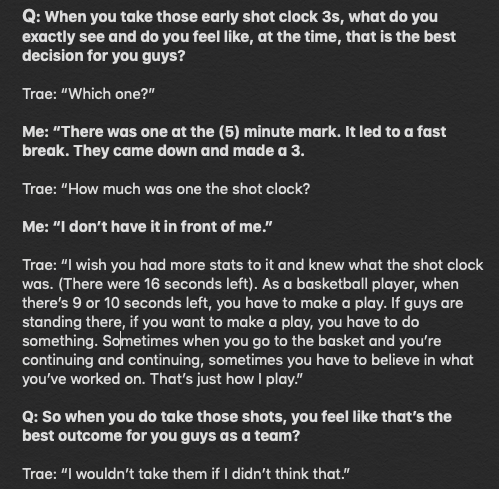 ..
..
Get stuck in the paint What does “get stuck in the paint” mean in basketball? How can you "get stuck in the paint" in basketball? Getting stuck in paint is...
Basketball number 98 Number 98 is quite rare, not many players wear it in basketball. Jaylen Brown Brown is an American...
Loose ball What is a "loose ball" in basketball? How to fight for a free ball? A loose ball is a ball in play that does not...
All about sports
"Bumblebees", "Bavarians" and other nicknames of football clubs in Germany Bayern Munich - "Bavarians", "red pants", "millionaires", "Star of the South", "FC...
Esports and Dota2 Esports has entered our lives quite firmly. In some countries, such as Russia, esports has been recognized...
Volgograd Arena Built specifically for the matches of the 2018 World Cup, the Volgograd Arena was erected on the basis of the former stadium.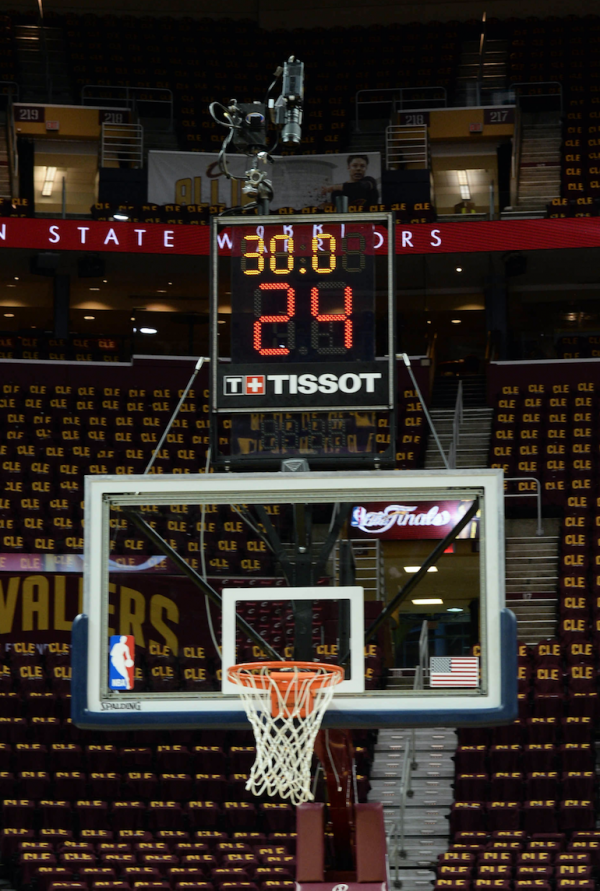 ..
..
The rules of the game in hockey: duration of the match, tasks and duties of the players The match includes three periods, each of which lasts ...
basketball: clock and time
How long is a basketball game?
Basketball is played for a certain amount of time. Different leagues and levels of play vary:
- High School - High school basketball games consist of four 8-minute quarters or two 16-minute quarters.
- College - NCAA college basketball games consist of two 20-minute halves. The same for WNBA and international games.
- NBA - NBA games consist of four 12-minute quarters.
What time is the clock?
The clock runs whenever the ball is in play. The clock is stopped whenever the ball goes out of bounds, a foul is called, free throws are taken and during time-outs. When the ball is in the strike zone, the clock starts as soon as the player touches the ball.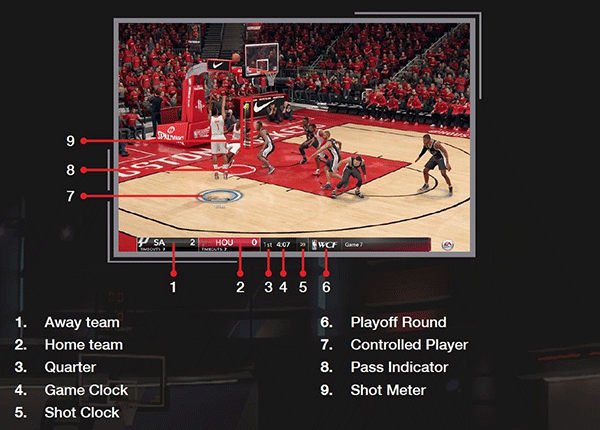
In the NBA, the clock stops after a hit made during the last two minutes of play and overtime. In college, he stops in the last minute of the game and in overtime.
Over time
If the game is tied at the end of regular time, extra time will be played. In most leagues, overtime is 5 minutes. Additional overtimes will be added until one of the teams is at the top.
Shot clock
A shot clock has been added to speed up the game and prevent teams from stopping. This is how long you need to shoot the ball. If the ball goes into possession or goes into the basket, the shot clock restarts. Shot timer length varies by basketball league:
- NCAA College Men - 35 seconds
- NCAA College Women - 30 seconds
- NBA - 24 seconds
Not all states have high school shot clocks. Where they do, they usually follow NCAA rules.
Timeouts
30 second timeout signal
To give your team a break, call a game, or simply stop play for a while, teams can call a timeout.